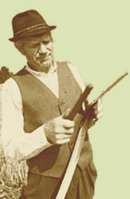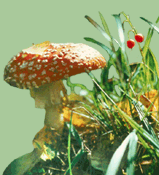The seawater rises and falls
Tarmo Soomere describes the Coriolis Force and its impact on our seawater. For instance, why the upper water layer may turn ice-cold on a hot summer day. This phenomenon is called coastal upwelling, a nuisance for those on vacation, but a blessing for natural diversity and rich fish catch in many areas of the world. The feature story is supplied with detailed explanations and illustrative materials of the phenomenon. In our seas, wind that blows along the coast is the major cause for upwelling. In deeper areas upwelling is caused by other factors, such as an under-water hill or a strong cyclon. As a result of upwelling, many nutrients are brought into the top water layer, thus increasing the biomass and fish catch.
Estonian Nature enquires
Marika Kose writes about restoring dune habitats in Luitemaa, Pärnu County
Val Rajasaar explains the activities of Studio Viridis.
Tree of the Year: Farewell, Estonian ash woods
Tõnu Ploompuu predicts the soon disappearance of our most common broad-leaved tree species: for about a decade our ash trees have been attacked by an unknown disease. Ash as a forest tree is already quite rare, making up only 0.4% of our forests. The disease has spread in many areas of East-Europe and the reasons for the disease are still unknown.
The Keeper of Estonian Life Science
Toomas Tiivel presents: the secret society of theoretical biology Duk-Duk, and the public recognition to Estonian nature scientists issued by the society. Duk-Duk was founded in February 1974, and the prize called The Keeper of Estonian Life Science was initiated exactly 10 years later. The author, one of the founders of the secret society, sheds some light on the history of the Duk-Duk and lists all the prize winners (14).
A bunch of bugs on birch leaf
Kaljo Voolma introduces exceptional bug species, whose parents take special care of their offspring. Parental care is rare among insects and the author describes this interesting behaviour among shield bugs.
Johannes-Harald Miländer, the Grand Old Man of Estonian beetle-researchers
Georg Miländer recalls the activities of his friend and colleague in the research of beetles. In August, 107 years passed from his birth. In this article, the life, habits, works and projects of this great scientist are revisited. His beetle collection has about 2800 species and 35 000 individuals, and it now belongs to the Institute of Zoology and Botany.
The man who knew mires. Arvi Paidla 70
Ann Marvet tries to keep the memory of a meliorater who became a researcher and protector of Estonian mires. Although he did not write much, he was often elected as the favourite author of the Estonian Nature magazine. He spent quite some time in Siberia, researching the ecology of mires there.
The Pärnu coastal meadow nature protection area
Piret Kiristaja takes a glance at the current state of the coastal nature of our summer capital Pärnu: the main pressure on the coastal meadows come from real estate development and reed growth. The coastal area is a favourite place for migrating birds and there are also remarkably many protected plant species in the protected area.
Chicory tastes like old-time farm coffee
Urmas Kokassaar suggests drinking the historically known coffee made of chicory. It really tastes like coffee, but is not as expensive. The part of the plant used for food and drinks is the root. In Estonia chicory was taken into coffee mix in the end of the 19th century. The plant is actually an alien species here; it is mostly grown and produced in France and Germany.
Interview: The benefit of and damage by forest insects is relative
Toomas Kukk has interviewed Kaljo Voolma, a forest entomologist.
Hiking trail: On the tracks of the Alatskivi manor masters
Katre Palo likes the culturally and naturally diverse hiking landscapes of the Alatskivi area. The marked hiking trail is about 5 km long and winds around the lake and the settlement of Alatskivi; the side trails lead to the villages of Peatskivi and Kõdesi. Numerous sights are related to the Estonian national hero Kalevipoeg.
Protected fungi of Estonia
Erast Parmasto is glad that during the recent years many species of fungi have been taken under nature conservation. There are now 46 protected species of fungi in Estonia. The author analyses the possibilities for the actual protection methods and introduces 6 little-known, but interesting species.
Feedback: Tuulemägi as seen by the municipality officials
Piret Tomson from the Kõlleste rural municipality clears some issues related to the possible waste dumping site at Tuulemäe, described in the previous issue of Estonian Nature (July 2007).
The park of the Windeck summer manor is going to be felled
Heldur Sander and Sulev Järve do not think that it is right to cut down the former park of Tallinns summer manor or give it into private property. During many years, the park has been used as a public green area. The park is situated in the Maarjamäe settlement and was founded in the second half of the 19th century. The article lists the species and age composition of the park. The authors regret that the park is going to be felled for the favour of founding a new football stadium there.
Along the limestone areas of Võrumaa
Tapio Vares continues his journey along the few limestone area of Võrumaa, a land based mostly on sandstone. He describes several limestone denudations and the related waterfalls along the rivers of South-Estonia, starting from Rõuge, to the Tuhkvitsa creek in Setumaa, until he finds a real limestone plateau in Tiirhanna and behind that in nowadays Russia.
The genesis of Brown Trout in Central-Estonia
Based on old documents, Kalle Kroon brings some clarity into the development of the distribution area of the Brown Trout. It has been known that the natural distribution area of the Brown Trout was in the few rivers of North- and South-Estonia, while the rivers of Central-Estonia were settled by the trout from fisheries. The author, a historian, has found documents that prove the opposite: the Brown Trout lived in several Central-Estonian rivers already in the end of the 17th century.
| 

![[IN ENGLISH]](images/gb.gif)





